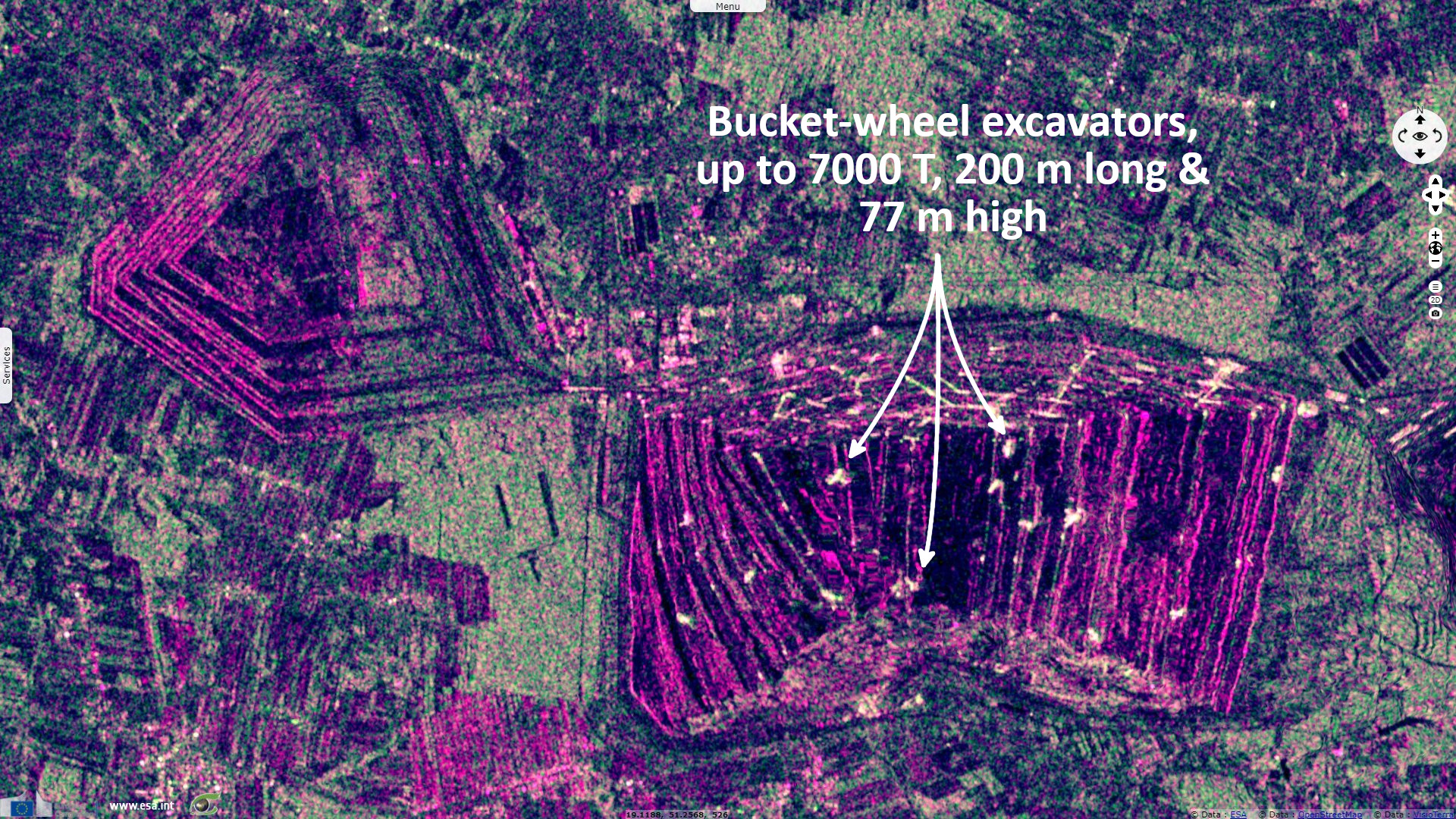Bełchatów lignite-fired power station, Europe's largest CO2 emitter, Poland
Sentinel-2 MSI acquired on 20 September 2018 at 09:50:21 UTC
Sentinel-1 CSAR IW acquired on 06 August 2021 at 16:26:38 UTC
Sentinel-1 CSAR IW acquired on 18 August 2021 at 16:26:39 UTC
Sentinel-1 CSAR IW acquired on 06 August 2021 at 16:26:38 UTC
Sentinel-1 CSAR IW acquired on 18 August 2021 at 16:26:39 UTC
Keyword(s): Climate change, infrastructure, non-renewable energy, strip mine, coal, greenhouse gas emissions, Poland
The plant is estimated to have been the coal-fired power plant which emitted the most carbon dioxide in the World in 2018 at 37,6 million tons; 1.5 millions tons more than the entire 8 millions inhabitants of Switzerland including carbon generated by their electric and non-electric power consumption. Its relative emissions are estimated at 1.756 kg per kWh, the 11th worst in Europe.
It of the largest coal reserve in Poland having estimated reserves of 1930 million tonnes of lignite coal. In 2015, the mine produced 42.1 million tonnes of lignite (66.7% of Poland's total lignite production). It is up to 8.5 km long, 3.25 km wide and 310 m deep.







